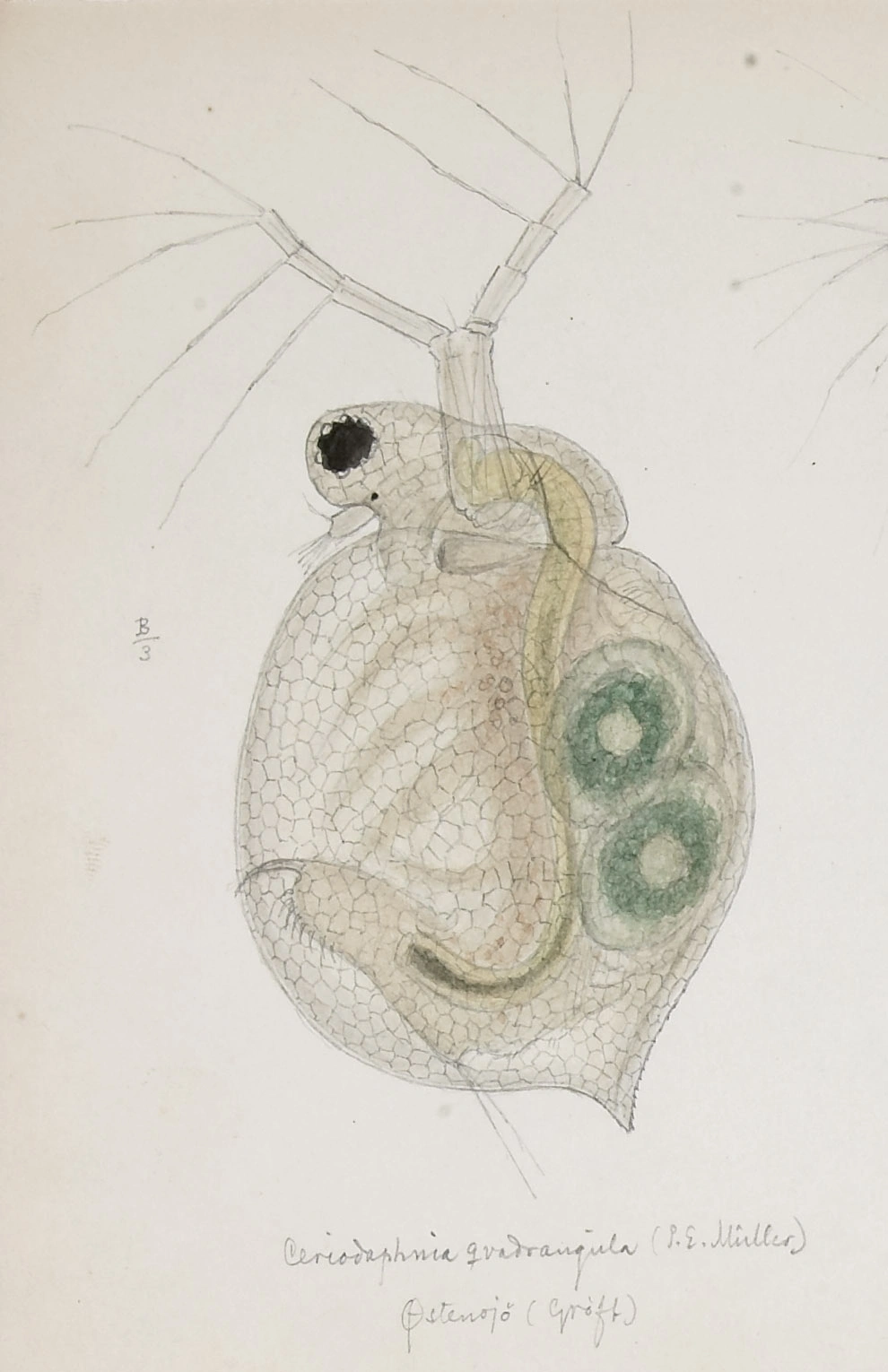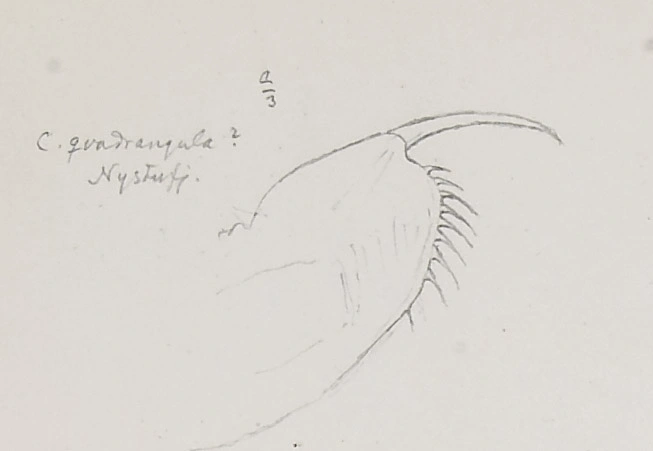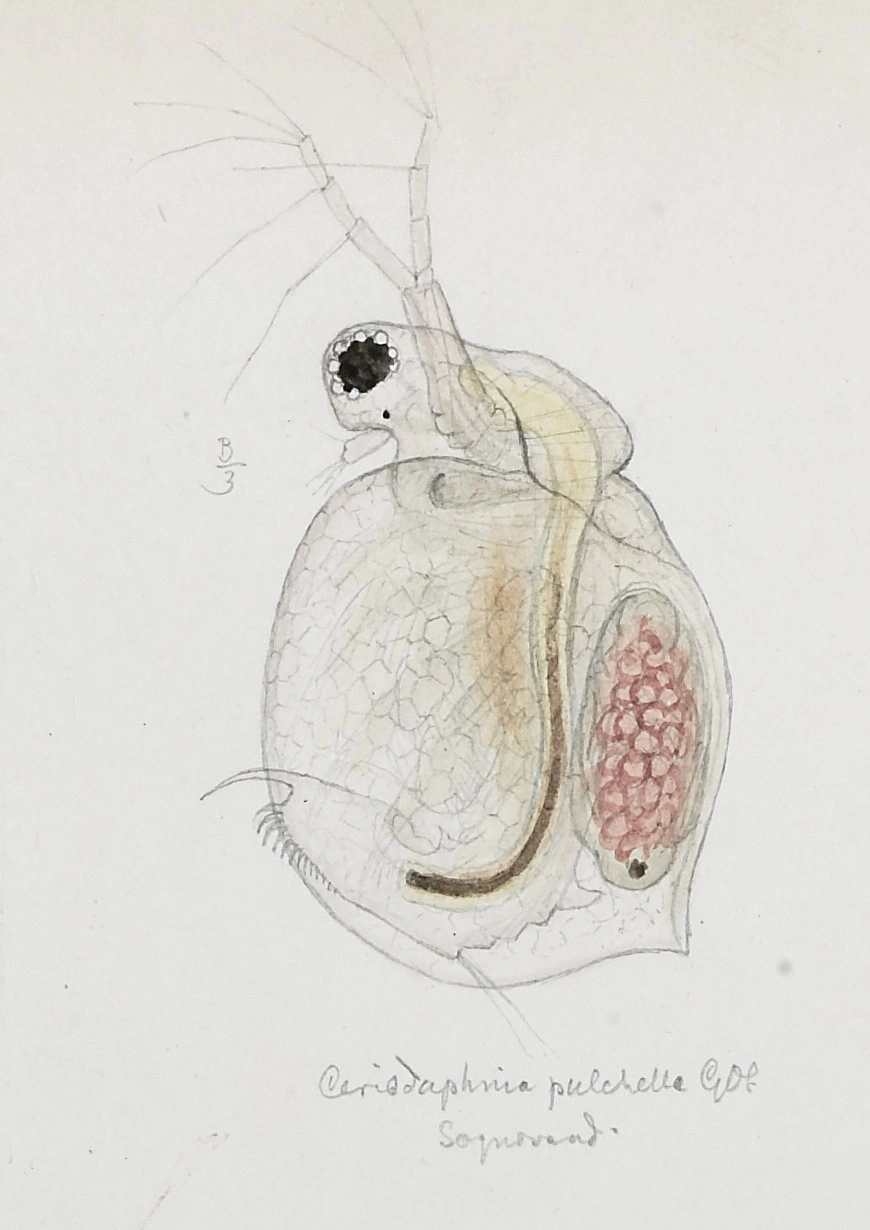Ceriodaphnia quadrangula
Ceriodaphnia quadrangula is the most common species within the genus Ceriodaphnia being widely distributed in Norway. It is known as an acid tolerant species and may occur in high numbers both in the pelagic as well as in the littoral.
Key characteristics
Ceriodaphnia quadrangula (female)
Ceriodaphnia quadrangula (abdomen)
Seen from the side Ceriodaphnia quadrangula has a more square form compared to any of the other Ceriodaphnia species. Its head is evenly rounded. The post abdomen is quite long and is often seen outside the carapace. This may be used to distinguish this species from C. pulchella whose postabdomen is always hidden by the carapace. Near anus the postabdomen has a concave form and at the posterior end has a row of 8–10 spines. It is rather transparent with a grey/yellow colour with a reddish or bluegreenish tinge.
Female: Length 0.4–1.2 mm
Male: Length 0.5–0.7 mm
Ecology and distribution
Among Ceriodaphnia species in Norway, C. quadrangula is the most common and is found in about 20 % of the water bodies. It is found all over the country with the highest number of records from the south and north-eastern parts. It is a plankton/littoral species which occurs in water bodies of all sizes from sea level to the alpine zone (1380 m a.s.l.) with its highest frequency between 100 and 700 m a.s.l. C. quadrangula is acid tolerant and very common in localities having pH<5.0. Conductivity varies between 0,4 and 53 mS/m.
| Vitenskapelig navn | < 4,5 | 4,5 - 4,9 | 5,0 - 5,4 | 5,5 - 5,9 | 6,0 - 6,4 | 6,5 - 7,0 | 7,0 - 7,4 | > 7,5 |
|---|---|---|---|---|---|---|---|---|
| 46 | 28 | 22,6 | 28,6 | 23,8 | 14,4 | 16,1 | 8,7 |
| Vitenskapelig navn | < 1,0 | 1,0 - 1,4 | 1,5 - 1,9 | 2,0 - 2,9 | 3,0 - 3,9 | 4,0 - 4,9 | 5,0 - 6,9 | 7,0 - 9,9 | > 10,0 |
|---|---|---|---|---|---|---|---|---|---|
| 6,9 | 15,8 | 21,2 | 28,8 | 28,2 | 20,4 | 20,6 | 18,5 | 18,5 |
| Vitenskapelig navn | < 0,01 | 0,01 - 0,09 | 0,1 - 0,9 | 1,0 - 9,9 | 10,0 - 99 | 100 - 999 | > 1000 |
|---|---|---|---|---|---|---|---|
| 14,7 | 16,9 | 23,5 | 23,3 | 19 | 16,1 | 21,7 |
| Vitenskapelig navn | < 100 | 100-299 | 300-499 | 500-699 | 700-999 | >1000 |
|---|---|---|---|---|---|---|
| 14,1 | 30,7 | 24,3 | 25,3 | 8,9 | 5,3 |
Look-alikes
Ceriodaphnia pulchella


